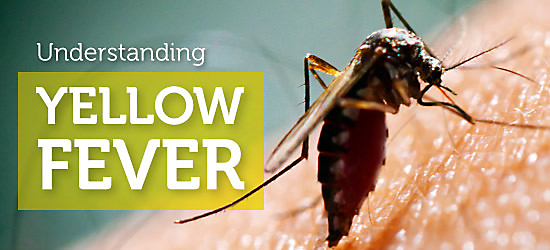By Iyemah David
A Medical Laboratory Scientist with Innovative Biotech Limited, Mrs Jennifer Shoshan said that currently, there are no rapid diagnostic tests for yellow fever or the virus that causes the disease.
Rapid tests, also known as rapid diagnostic tests or RDTs, are easy-to-use tests that provide quick results, usually in 20 minutes or less.
Speaking in an interview, Shoshan said that yellow fever was diagnosed with blood tests that detected disease-specific antibodies produced in the response to the virus.
“This includes a common test called an enzyme-linked immunosorbent assay (ELISA) that can detect different types of antibodies produced at different stages of the infection.
“The blood draws itself only takes a couple of minutes. The ELISA test results, however, can take anywhere from four to 14 days to receive,” she said.
According to her, once healthcare providers suspect yellow fever, they generally run a test on the serum in your blood to look for markers that are specific to the virus that causes the illness.
“Early on in the disease progression, the test may not be able to detect anything.
That can be frustrating when a person wants to know why they are sick.
“Keep in mind that most cases of yellow fever do not ever progress past that point, meaning they will be sick for a few days, then recover and be just fine,” she said.
The expert said that once a case had progressed to the later, toxic phase, the test is better able to detect it.
“Results, though, may take a few days to two weeks to come back,” she stressed.
Shoshan said that 50 per cent of people in the toxic stage could die within that time, healthcare providers typically began treatment right away, based on what’s called a presumptive diagnosis.
“That means they’ll look at the symptoms along with where the person must have travelled to and when.
“Treatment involves managing the symptoms; “hydration and lowering your fever” since no antiviral treatments are known to work on the virus,” she said.
She said that symptoms that sent a person to the healthcare provider with yellow fever were also common in a wide array of other illnesses.
“Healthcare providers may order additional blood tests for many other diseases with a similar presentation.
These can include severe malaria; Dengue fever, also caused by a member of the flavivirus family – Leptospirosis, Viral hepatitis.
“Other fevers that are hemorrhagic involve the liver, poisoning – the healthcare provider may test the person for any number of other things, depending on the specific set of symptoms and other factors, such as lifestyle or recent travel,” she said.
The expert said that knowing the basic symptoms of yellow fever and whether a person was at a heightened risk of complications could be helpful if the person had been to one of the 47 countries having prevalent fever in Africa.
According to her, if you develop a flu-like illness a few days after being bit by a mosquito in any of those regions, don’t delay getting medical treatment.
According to the World Health Organization (WHO), since September 2017, yellow fever cases have been reported across several states in Nigeria.
From Jan.1 to August 31, a total of 1,312 suspected cases were reported in 367 Local Government Areas (LGAs) across 36 states and the Federal Capital Territory (FCT).
A total of 45 blood samples were sent to the Institut Pasteur in Dakar (IPD) and 31 samples tested positive by Plaque reduction neutralization test (PRNT).
From the 31 PRNT-positive cases, 12 cases had a history of yellow fever vaccination.
Two deaths were reported among the remaining 19 non-vaccinated PRNT-positive cases.
According to WHO, case fatality ratio is 11 per cent.
The 19 PRNT-positive cases were reported from Enugu (seven cases), Anambra (three cases), Benue (three cases), Delta (two cases), Oyo (two cases), Niger (one case) and Osun (one case).
Investigations into the PRNT-positive cases are ongoing.
Meanwhile, Yellow fever is an acute viral haemorrhagic disease transmitted by infected Aedes mosquitoes.
Symptoms include fever, headache, jaundice (yellowing of the skin), muscle pain, nausea, vomiting and fatigue.
Some infected people may, however, not experience any of the symptoms.
In severe cases, bleeding may occur from the mouth, nose, eyes or stomach.




